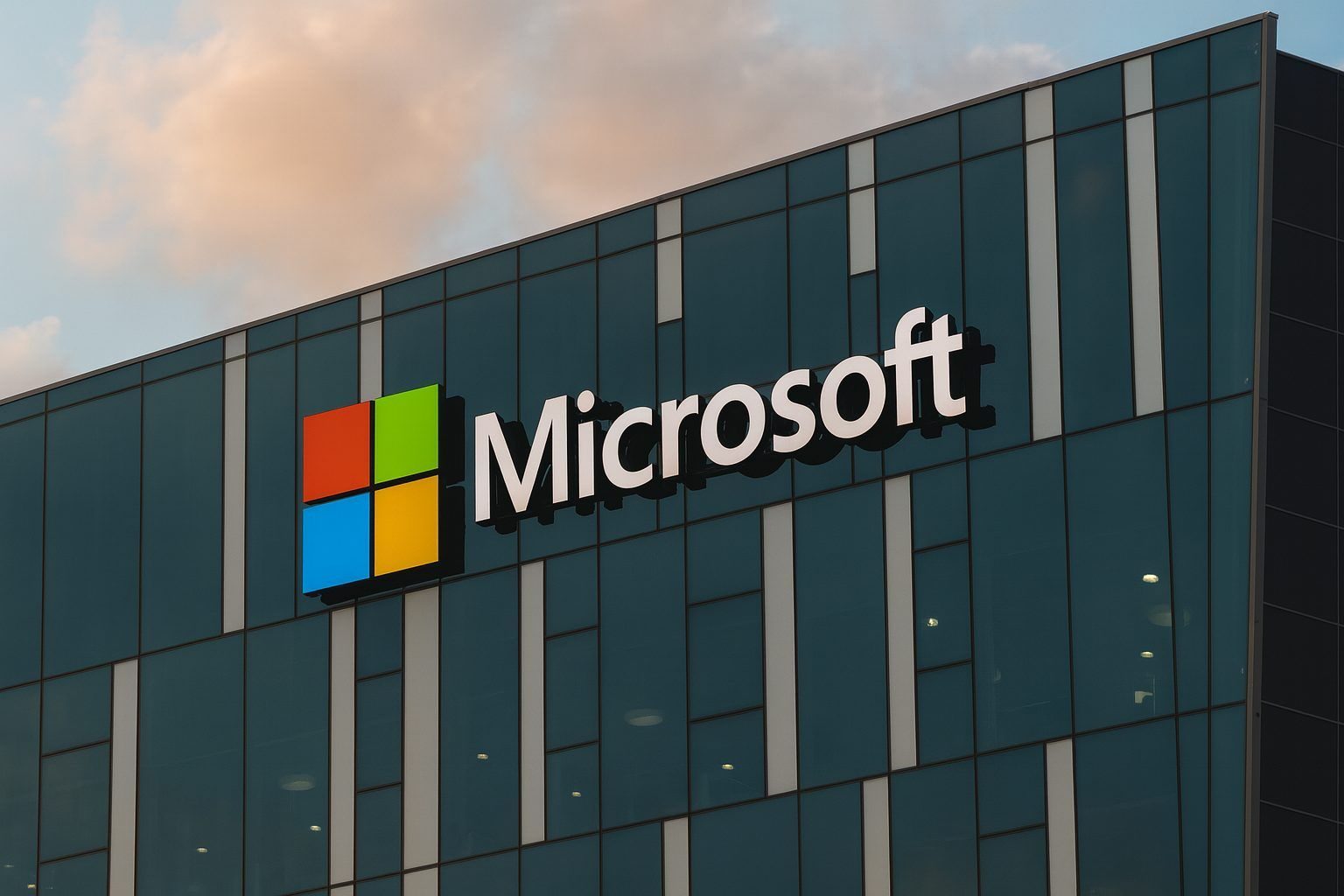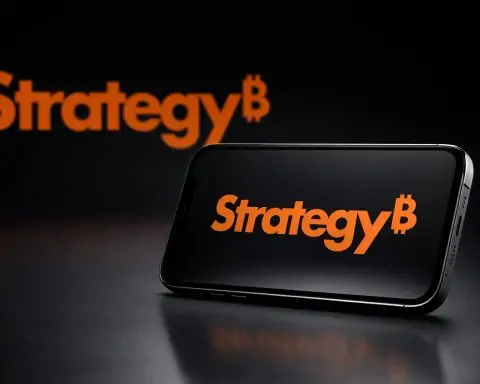Updated: November 26, 2025
Microsoft Corporation (NASDAQ: MSFT) is trading roughly flat around $477 on Wednesday, as investors digest a dense stream of AI‑focused product news, new partnerships, institutional buying and fresh analyst commentary published today. Even after a sharp pullback from its summer peak, Wall Street still sees sizeable upside for Microsoft stock, while new headlines highlight both the scale of its AI ambition and the execution challenges that come with it. [1]
Microsoft stock price on November 26, 2025
As of early U.S. trading on Wednesday:
- Share price: about $476.99 per share.
- Intraday range so far: roughly $464.89 – $479.15. [2]
- Today’s move: modestly higher (around +0.6%) versus an opening price near $474, indicating a relatively calm session after recent volatility. [3]
- 52‑week range:$344.79 – $555.45; the current price leaves MSFT about 14% below its July all‑time high around $555. [4]
- 12‑month performance: up roughly 12–14% over the past year, despite a double‑digit slide in the last month as AI‑driven tech valuations cooled. [5]
In other words, MSFT today is trading in the middle of its recent range: well above last year’s lows, but clearly below the euphoric highs set when AI enthusiasm peaked mid‑summer.
Wall Street remains bullish on MSFT despite AI‑capex worries
Consensus: “Strong Buy” with ~30% upside
Across major research aggregators, Microsoft still carries a Strong Buy / Buy consensus:
- MarketBeat’s latest compilation shows an average 12‑month price target around $634, implying roughly 33% upside from ~$477, with individual targets stretching from about $490 to $730.
- Other platforms (TipRanks, Zacks, Investing.com and Public) cluster in a similar band, with average targets in the $625–$630 range and almost no outright Sell ratings.
That bullish stance is reinforced by fresh notes around Microsoft’s AI strategy:
- Jefferies recently reiterated a Buy rating and $675 target, citing accelerating adoption of Microsoft Copilot, early AI agent use‑cases and the company’s position at the center of the enterprise AI stack. [6]
- A separate piece this week argues that even if the “AI bubble” deflates, Microsoft is one of the few platforms with enough scale, profitability and diversified cash flow to remain an attractive long‑term compounder. [7]
Earnings backdrop: big AI wins, big AI spending
On October 29, 2025, Microsoft reported blowout fiscal Q1 2026 results:
- Revenue: $77.7 billion, up 18% year‑on‑year.
- Operating income: $38.0 billion, up 24%.
- Adjusted EPS:$4.13, handily beating consensus around $3.65–$3.67. [8]
- Microsoft Cloud revenue: $49.1 billion, up 26%, with Azure and other cloud services up roughly 40%, underscoring fierce demand for AI‑ready infrastructure. [9]
The flip side: Microsoft disclosed record capital expenditure of roughly $35 billion in the quarter, and signaled that AI‑driven infrastructure spending would remain elevated into 2026. That spooked some investors, who worry about how long margins can absorb such aggressive build‑outs. [10]
Even so, Street forecasts for FY 2026 EPS have ticked higher, and most earnings calendars now pencil in late January or early February 2026 as the window for Microsoft’s next results, with several listing January 28–29 or February 3–4 as provisional dates.
Key Microsoft news today that could matter for MSFT stock
Below is a roundup of the most relevant Microsoft‑related headlines dated November 26, 2025, and why they matter for shareholders.
1. Industrial robotics AI: RLWRLD chooses Microsoft Azure
Robotics AI company RLWRLD announced a strategic partnership with Microsoft aimed at accelerating “physical AI” in industrial settings.
What’s happening
- RLWRLD will use Microsoft Azure to scale its robotics AI models.
- The collaboration targets manufacturing, logistics and hospitality, with joint proof‑of‑concepts and go‑to‑market plans across Asia.
- The partnership was highlighted via a GlobeNewswire release and syndicated across several financial news outlets this morning.
Why investors care
Industrial robotics is one of the highest‑value, hardest‑to‑solve AI domains. Every robot that runs inference in Azure data centers or uses Microsoft’s tooling potentially adds to:
- Cloud consumption (Azure)
- AI services revenue, and
- The stickiness of Microsoft’s broader enterprise stack.
Taken together with Microsoft’s massive AI data‑center program in the UAE and Portugal, RLWRLD’s choice of Azure reinforces the idea that Microsoft is becoming the default infrastructure layer for AI‑heavy enterprises.
2. On‑device AI for Android: NimbleEdge and Microsoft’s Foundry Local
In another AI‑heavy announcement, NimbleEdge unveiled a collaboration with Microsoft to bring Foundry Local—an on‑device AI runtime—to Android. The partnership was showcased at Microsoft Ignite 2025 in San Francisco and formalized today via a GlobeNewswire release.
Key details
- Foundry Local is described as a kind of “mini AI server inside your phone”, running optimized small language models locally.
- The goal is to enable low‑latency, privacy‑preserving, offline‑capable AI experiences on millions of Android devices.
- NimbleEdge contributed runtime and orchestration technology that has already been deployed at scale on 30M+ devices.
Why it matters for MSFT
- It pushes Microsoft deeper into the mobile AI layer, even on platforms it doesn’t own (Android).
- Local inference can lower cloud costs per user while still anchoring the high‑value training and orchestration workloads in Azure.
- For investors, it’s another datapoint showing Microsoft is hedging the future of AI across both cloud and edge, instead of betting solely on giant cloud models.
3. Microsoft 365 & Teams: New AI‑powered tools and performance upgrades
AI continued to seep into Microsoft’s productivity offerings through multiple announcements today.
Pearson launches AI‑powered “Communication Coach” for Microsoft 365
Edtech giant Pearson introduced Communication Coach, an AI‑powered tool built with Microsoft and integrated into Microsoft 365. [11]
- It analyzes speech, meeting interactions and communication patterns.
- Users get feedback on grammar, tone, clarity and professional expression in real time.
This strengthens the value proposition of Microsoft 365 as a premium, AI‑enhanced subscription, helping defend pricing power against cheaper productivity suites.
Teams Desktop gets faster startup and calling performance
Two separate cybersecurity and tech outlets reported a significant update to the Teams Desktop client for Windows, focused on: [12]
- Faster startup times, particularly for calling features.
- Better overall performance and responsiveness.
While incremental, these kinds of improvements matter for retention: Teams is a core pillar of the Microsoft 365 moat, and performance complaints are one of the few real friction points customers still highlight.
4. Copilot is leaving WhatsApp, highlighting platform risk
One of today’s more eye‑catching headlines is that Microsoft Copilot will stop working on WhatsApp as of January 15, 2026, following Meta’s new policy banning third‑party AI chatbots on the platform.
- Microsoft says it will guide users toward Copilot on mobile, web and Windows instead.
- OpenAI’s ChatGPT is also affected by the policy change.
For MSFT shareholders, this is a reminder that:
- Microsoft’s distribution for Copilot is strongest where it controls the surface—Windows, Edge, Microsoft 365, GitHub—not in third‑party “walled gardens.”
- Platform policy risk is real, but the financial impact from WhatsApp specifically is likely limited, given Copilot’s core monetization flows through enterprise and Microsoft 365 licensing.
5. Securing Azure AI: Microsoft publishes guidance on emerging threats
On its official tech community blog, Microsoft released a deep dive on securing Azure AI applications, focusing on threats like prompt injection, adversarial inputs and model manipulation.
The post outlines best practices for:
- Data access governance
- Model monitoring and evaluation
- Defenses against malicious prompts and input data
This doesn’t move the stock by itself, but it’s strategically important: as AI becomes mission‑critical, customers will gravitate toward platforms that bake security and compliance into the stack, an area where Microsoft is aggressively positioning itself.
Data centers and leadership: AI infrastructure stress shows up at the org chart
A more cautionary development today came from Network World, which reports that Microsoft has lost two key AI infrastructure leaders: [13]
- Nidhi Chappell, head of AI infrastructure, who oversaw build‑out of what she described as the world’s largest AI GPU fleet supporting Microsoft, OpenAI and Anthropic.
- Sean James, senior director of energy and data center research, who is leaving for Nvidia.
The article notes that their departures arrive just as Microsoft faces:
- Power availability constraints and slow grid interconnections.
- A global race to secure enough AI accelerators (GPUs).
- Mounting pressures to balance massive capex with shareholder expectations.
For investors, this adds texture to the October earnings narrative: Microsoft is all‑in on AI, but the limiting factors are increasingly physical (power, land, chips, talent) rather than purely software‑driven. Any sustained execution issues here could affect Azure capacity growth and, by extension, Copilot and AI revenue.
Partner ecosystem and security startups: expanding the Microsoft surface area
Today also brought several ecosystem and partner headlines that, taken together, reinforce how wide Microsoft’s reach has become.
Nigerian partner wins global Microsoft award
Nigerian technology firm Task Systems Limited was named a Microsoft Partner of the Year Award winner in the U.S., emerging among 42 winners from more than 4,000 contenders across 100 countries. [14]
Task Systems specializes in cloud transformation, enterprise integration, cybersecurity and digital workplace solutions built on Microsoft technologies. The recognition:
- Strengthens Microsoft’s presence in high‑growth African markets.
- Shows how much of its growth now comes via partners who implement and customize its platforms for local customers.
Bsure raises funding to secure Microsoft accounts
Norwegian startup Bsure secured €1.8 million in funding to help enterprises uncover risky, inactive and over‑privileged identities inside their Microsoft environments, while also reducing unnecessary license spend. [15]
This is another example of a specialist vendor building an entire business atop Microsoft’s identity and licensing stack—which ultimately reinforces the stickiness of Azure AD / Entra and Microsoft 365 in the enterprise.
New capital‑markets tools: BMO launches Canadian CDR for Microsoft
In Canada, Bank of Montreal (BMO) announced new Canadian Depositary Receipts (CDRs) that provide local investors exposure to several U.S. blue‑chips, including Microsoft. [16]
- Microsoft’s CDR will trade on Cboe Canada under ticker ZMSF.
- CDRs are hedged and denominated in Canadian dollars, making it easier and often cheaper for Canadian investors to hold U.S. equities without managing FX directly.
While not a direct driver of fundamentals, this broadens the investor base for MSFT and underscores the stock’s status as a global core holding in portfolios that want AI exposure.
Big money flows: institutions keep adding Microsoft stock
Several 13F‑tracking stories published today highlight continued institutional appetite for MSFT:
- NatWest Group plc boosted its Microsoft stake by 31.7% in Q2 to 43,758 shares, worth about $21.8 million, making MSFT the bank’s largest holding at roughly 6.4% of its portfolio.
- AG2R LA Mondiale Gestion d’Actifs nudged its position 0.8% higher to 278,742 shares (~$138.6 million), where Microsoft is now its second‑largest holding (≈7.1% of the portfolio).
- Shaker Investments LLC OH raised its Microsoft holdings by 22% to 8,039 shares, worth about $4 million, with MSFT representing 1.6% of its assets.
- Behind the scenes, mega‑holders such as Vanguard, Northern Trust and Goldman Sachs have also continued to add shares over recent quarters, contributing to overall institutional ownership around 70%+ of the float.
These filings arrive alongside analyst data that still assigns Microsoft one of the highest consensus price targets in mega‑cap tech, with average 12‑month estimates clustered in the low‑$600s, well above today’s ~$477 share price.
AI‑first events: Copilot & AI Agents Summit showcases Microsoft’s strategy
On the event front, Microsoft is hosting its Copilot & AI Agents Summit today for the EMEA region, with a full day of keynotes and sessions centered on AI in the workplace.
Highlights from the agenda include:
- A keynote on how AI is reshaping productivity and collaboration, drawing on Microsoft’s Work Trend Index.
- A recap of the most important Ignite announcements, especially around Microsoft 365 Copilot, Copilot Studio and custom AI agents.
- Sessions on secure AI deployment, Zero Trust governance and AI‑powered sales and service transformations.
For shareholders, this is more than marketing: it shows Microsoft actively educating customers on how to operationalize AI, which is critical if Copilot attach rates are to justify the enormous capex being poured into AI infrastructure.
How all of this fits into the Microsoft stock story
Taken together, today’s news flow paints a nuanced picture of Microsoft stock on November 26, 2025:
- Price action: MSFT is holding steady near $477, in the middle of its recent range and about 14% below its record high, even as broader AI‑driven indices remain elevated.
- Growth engine intact: Q1 FY26 earnings and multiple analyst notes confirm that Azure, Microsoft Cloud and Copilot are still growing rapidly, with AI a central driver. [17]
- Capex & execution risk: Massive AI infrastructure spending and today’s news about senior data‑center leaders exiting highlight the operational strain behind that growth. [18]
- Ecosystem expansion: Partnerships with RLWRLD, NimbleEdge, Pearson, Bsure and global partners like Task Systems show how Microsoft continues to extend its surface area across robotics, mobile AI, education, security and emerging markets. [19]
- Capital‑market & institutional support: New CDRs in Canada and several institutional accumulation disclosures underline the fact that MSFT remains a foundational holding for large investors seeking durable AI exposure. [20]
What MSFT investors may want to watch next
Looking beyond today’s headlines, key watchpoints include:
- Next earnings report (late Jan / early Feb 2026)
- Whether revenue and EPS continue to outpace rising AI capex, and how management frames returns on those infrastructure investments.
- AI infrastructure capacity and leadership
- How quickly Microsoft fills the roles vacated by its AI infrastructure leaders, and whether customers see any constraints or delays in new Azure AI capacity coming online. [21]
- Copilot adoption metrics
- Updates at future events or earnings calls about seat counts, usage and upsell for Copilot in Microsoft 365, GitHub and Dynamics—key for justifying premium pricing and AI‑driven revenue growth.
- Regulation and platform rules
- Further policy changes from platforms like Meta, as seen with WhatsApp, and ongoing regulatory attention to AI pricing and competition, especially in regions like the EU and Australia.
- Macro and AI sentiment
- Broader questions about an “AI bubble” will continue to influence multiples on all mega‑cap tech, Microsoft included—even if fundamentals remain strong. [22]
References
1. www.reuters.com, 2. www.investing.com, 3. www.investing.com, 4. www.tradingview.com, 5. www.financecharts.com, 6. finviz.com, 7. seekingalpha.com, 8. www.home.saxo, 9. www.home.saxo, 10. www.reuters.com, 11. techafricanews.com, 12. cybersecuritynews.com, 13. www.reuters.com, 14. nairametrics.com, 15. www.eu-startups.com, 16. newsroom.bmo.com, 17. www.home.saxo, 18. www.reuters.com, 19. techafricanews.com, 20. newsroom.bmo.com, 21. www.reuters.com, 22. seekingalpha.com







